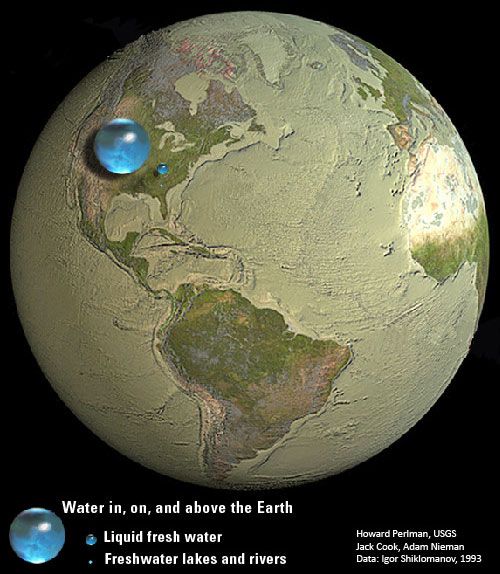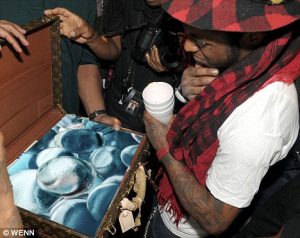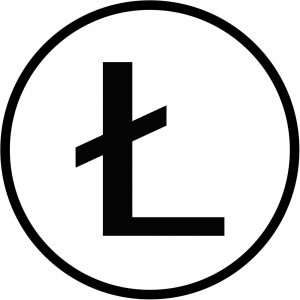Łitr is a project as part of Water Futures’/The Pump’s efforts towards acculturating a relationship with water that will keep life in good stead on this planet.
Łitr, the freshwater-backed world currency is here to reposition our value relationship from abstracted fait towards our most precious finite resource, drinking water.
How many $/€/¥ etc it is worth, who should get it and how to foresee gross inequality and exploitation of arbitrage opportunities upon implementation is another question altogether. At the MKW cafe and bar you can get a feel for what the new world would look like with goods available to purchase in both Ł and $.
At a future date you will be able to exchange any currency you already have to Ł via the website http://Litr.money
If you want some Łitr, make a request (with your ERC20 compatible wallet address of choice) in the comment section!
This project calls on our economic sensitivity when spending money and hopes to make the “spending” of water just as sensitive. All other modelling and specifics and questions raised about the real world functioning of such a system is an ongoing project of international collaborators which you can follow at http://Litr.money
One aspect is the launch of a currency inspired by the “money is time” mantra and that people are far more loss-averse with their money than their time. So why not make water a money and then we won’t want to lose it. Inspiringly, the Pula currency used by Botswana directly translates into english to mean rain.
This world-currency (as water is a world resource) is the Łitr. It may take on slang terms such as quid for pound or buck for dollar and be referred to as a few drops or a big glug. It would operate under the same decimal breakdown as a dollar with 1 Łitr being made up of 100 milliliters and a million litres being technically a megalitre, and a billion being a gigalitre and so on.

How many litres are there?
It can be visualized in the image below from this super resource. The smallest of the 3 blue spheres is our currency because that water is the version we need for life and is accessible to us.
world water amount: 1,260,000,000,000,000,000,000 liters
drinkable and available fresh water amount: 8820000000000000000 liters
Łitrs minted: 8820000000000000000
divided by 7 billion human people = 1260,000,000 Łitrs/Liters to spend
If we followed a UBI concept, a daily allowance might be 3,452,054 Łitrs per day.
Current global usage of hard currency is about 4% of the worlds money. Litr in cash could be as fun as this:  or this
or this  .
.
The rest (like $ € ¥ £ etc today) will be interacted with digitally (blockchain managed as ERC20 token with the code Łitr) where you would pay via debit cards, bank transfer, paypal, paypass, apple and google pay etc.
Until an official monetary policy change over, you can get a taste during online shopping by installing the chrome plugin word replacer so that all “$“ get replaced by “Ł“ 
(thanks to Josh Mu for pointing it out to me!).
The idea came from a brilliant chrome plugin I use called Time is Money. In the words of the creator “Download Time Is Money and start saving hours like dollars.”
This project requires no appeal to heart or compassion, just leveraging our already enculturated economic sensitivity.
It does have hellishly complex considerations like blue vs green water cycles. And forces a “services to industry/consumer” valuation framework which i think, while often good intentioned, are the bricks that pave the way to hell.

It would strangly bring back into service economics like the gold standard whereby each Litr was a promissory note on an actual liter or drinking water. Inflationary capitalism would look different under this model although 10-1 credit/debt generation would work in the same fashion. Interestingly though it might act as a buffer currency, explained wonderfully here by Mary Mellor. Mellor also outlines that money is a publicly owned infrastructure, not a private commodity and all the implications that go along with that.
FAQ:
Q: how many Łitr will a litre of water cost?
A: this is the hardest question and fittingly, I haven’t yet found an answer. It should be high enough to have incentives to respect the spending of water but it should also not put up economic barriers to water access for those most vulnerable. as this is a global currency it will have very different value in each market. as a guide, a cheap 500ml bottle of water in australia costs $1AUD but as another guide, the InnovationXchange Program Challenge is offering $2mUSD to a engineering breakthrough that can harvest water from the air at a cost of $0.02cents per litre.
Q: How to price goods?
A: Once we know how many Ł a litre of water costs, then do we price good by the amount of water it has taken to produce them as spelled eg, the image below + wages, transport, overheads etc that are now needing to be paid in Ł?

Q: how is the supply kept stable?
A: In the analogy of a gold standard, Łitr could be “mined” from the ocean into drinkable water through desalination or projects like the one mentioned above. There is a danger that more fresh water comes available as ice caps melt and some of that fresh water is captured. Obviously this incentive is counterproductive and magnified national inequalities as the countries with aggressive water capturing infrastructure would seize most of it. And that rivers flow downstream so the power to release water is purely held by upstream stakeholders.
Q: What about exploitable arbitrage and weaponization of watersheds?
A: I don’t imagine that we can foresee the complex incentive regimes and arbitrage this might introduce into global economics but my thinking at this stage is that water itself wouldn’t work as currency because of the ease in which it could be counterfeit. And because we don’t want a situation where armed guards must defend rivers and dams as if they are bank vaults (although that already happens).
for fun:
This is a future fictional point-of-view of a busker who had some of their donations stolen by a passerby. They had to play John Lennon songs for hours to get people to throw down 7 drops and that guy just takes one!!

ps: All the water is accounted for, people don’t need to be in possession of water to be able to spend it. They are just in possession of Łitrs.
plus, this is a wonderful write up attempting to work out how much money is in the world.
